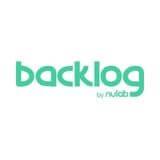- Free Version: Available for teams of up to 10
- Pricing: Premium plan $24/seat/month (with free 30-day trial period)
- Platforms supported: Available as a mobile app (iOS and Android) or a web-based software
Why Use SafetyCulture?
SafetyCulture is a project management platform that allows professionals in Information Technology (IT) and software testing to track, manage, and resolve defects throughout the entire development process. With the platform, you can audit programs, report issues, and assign actions to ensure they are managed properly. On top of that, the platform integrates with various other platforms that are crucial to the development process.
Features:
- Spot defects by conducting audits and inspections with digital checklists to ensure that you cover all bases.
- Assign corrective actions to issues reported during the audit process and make announcements to the team about these defects.
- Ensure that the team is equipped to handle defects by conducting digital training programs from within the platform.
- Make informed decisions to improve workflows with the robust data sets that SafetyCulture gathers.
- Use the platform in tandem with other popular development software through Integrations for a more seamless work experience.
Why Use Jira?
Jira is a popular project management tool that’s a favorite for development teams because it detects and manages defects well. It’s designed to help teams plan, track, and manage software development projects more clearly and efficiently.
Features:
- Sprint support
- Project management
- Collaborations and goal tracking
- Free Version: Yes
- Pricing: Starts at $8.15/user/month
- Platforms supported: Web, iOS, Android
Why Use New Relic?
New Relic offers complete visibility over development projects, which is why the platform is adept at spotting defects that can get in the way of the final product. The platform is ideal for businesses that need detailed performance insights and proactive issue-resolution strategies.
Features:
- Performance monitoring
- Multiple project dashboards
- Real-time ping monitoring
- Free Version: Yes
- Pricing: Custom pricing
- Platforms supported: Web, iOS, Android
Why Use ClickUp?
ClickUp makes it easy for managers to delegate tasks, leave comments, and take full control of development projects. The intuitive layout makes it easier for users to manage projects and keep track of potential defects.
Features:
- Customizable board views
- Integrated document and wiki management
- Automated workflows
- Free Version: Yes
- Pricing: Starts at $7/user/month
- Platforms supported: Web, iOS, Android
Why Use Backlog?
Owned by Nulab, Backlog comes with features for bug and defect tracking, making it a great pick for any team that needs comprehensive defect management tools. This software is known for its easy-to-use interface and collaboration, issue tracking, and version control features.
Features:
- Gantt and burndown charts
- Git and Subversion (SVN) repositories
- Custom fields and issue types
- Free Version: Yes
- Pricing: Starts at $35/month
- Platforms supported: Web, iOS
Why Use Rollbar?
Rollbar is primarily designed for error logging and issue resolving, which is why it’s a great fit for teams in need of defect management platforms. It’s known for automating the error response process and its ability to analyze and group similar errors.
Features:
- Real-time error monitoring
- Automated error response, grouping, and analysis
- Prioritization tools
- Free Version: Yes
- Pricing: Starts at $19/month
- Platforms supported: Web
Why Use Bugzilla?
Bugzilla is designed for software development, so it comes with various features that help spot and manage defects, making it a great choice for any development team. Bugzilla is the tool of choice for organizations looking for a customizable, no-cost solution to manage their software defects.
Features:
- Advanced search capabilities
- Email notifications
- Multiple database engines
- Free Version: Free
- Pricing: Free
- Platforms supported: Web
What is Defect Management Software?
A defect management software is a platform specializing in tracking, managing, and correcting defects or bugs in a software development project. This type of digital tools is critical in software testing and maintenance, as it helps ensure that issues can be processed, assigned, and resolved efficiently. Typically, this kind of software integrates with other tools in a software development environment, providing a centralized platform for managing software quality assurance.
Importance
Defect management software provides a systematic approach to handling software defects, enhancing the final product’s overall quality and reliability. It allows development teams to detect issues early in the development cycle, significantly reducing the cost and time required for remediation. Moreover, this type of software encourages collaboration among team members, as it typically features tools that facilitate communication and information sharing about the defects.
Defect management software also aids in prioritizing defects, helping teams address the most critical issues that could substantially impact the software’s functionality. This prioritization ensures that resources are allocated efficiently, improving productivity. Additionally, comprehensive reporting features allow teams to analyze trends in defects, leading to improved strategies for preventing similar problems in future projects.
Key Features
While teams are free to choose software options with features that can help with their specific needs, there are some features that are essential in defect management software. These features include the following.
- Bug tracking
- Issue tracking
- Real-time collaboration
- Customizable workflows
- Automated notifications
- Integration capabilities
- Reporting and analytics
How to Choose the Right Defect Management Software
Here’s a quick breakdown of the software options featured above to make it easier for you to compare them and determine the best fit for your team:
| Defect Management Software | Free Version | Paid Plan | Mobile App |
| SafetyCulture | Yes | $24/user/month* | Yes |
| Jira | Yes | $8.15/user/month | Yes |
| New Relic | Yes | Custom pricing | Yes |
| ClickUp | Yes | $7/user/month | Yes |
| Backlog | Yes | $35/month | Yes |
| Rollbar | Yes | $19/month | No |
| Bugzilla | Yes | Free | No |
* billed annually









